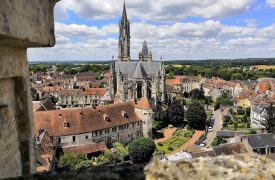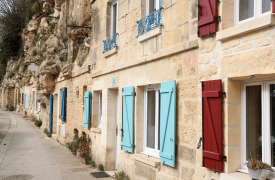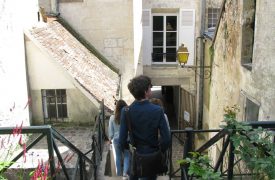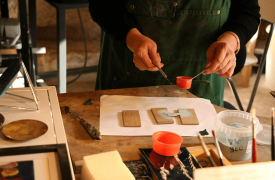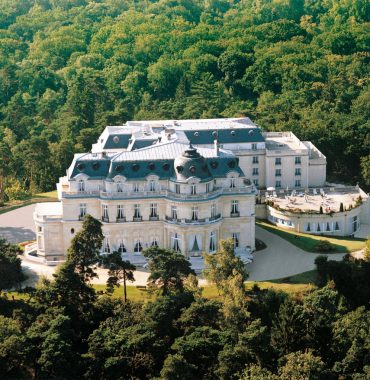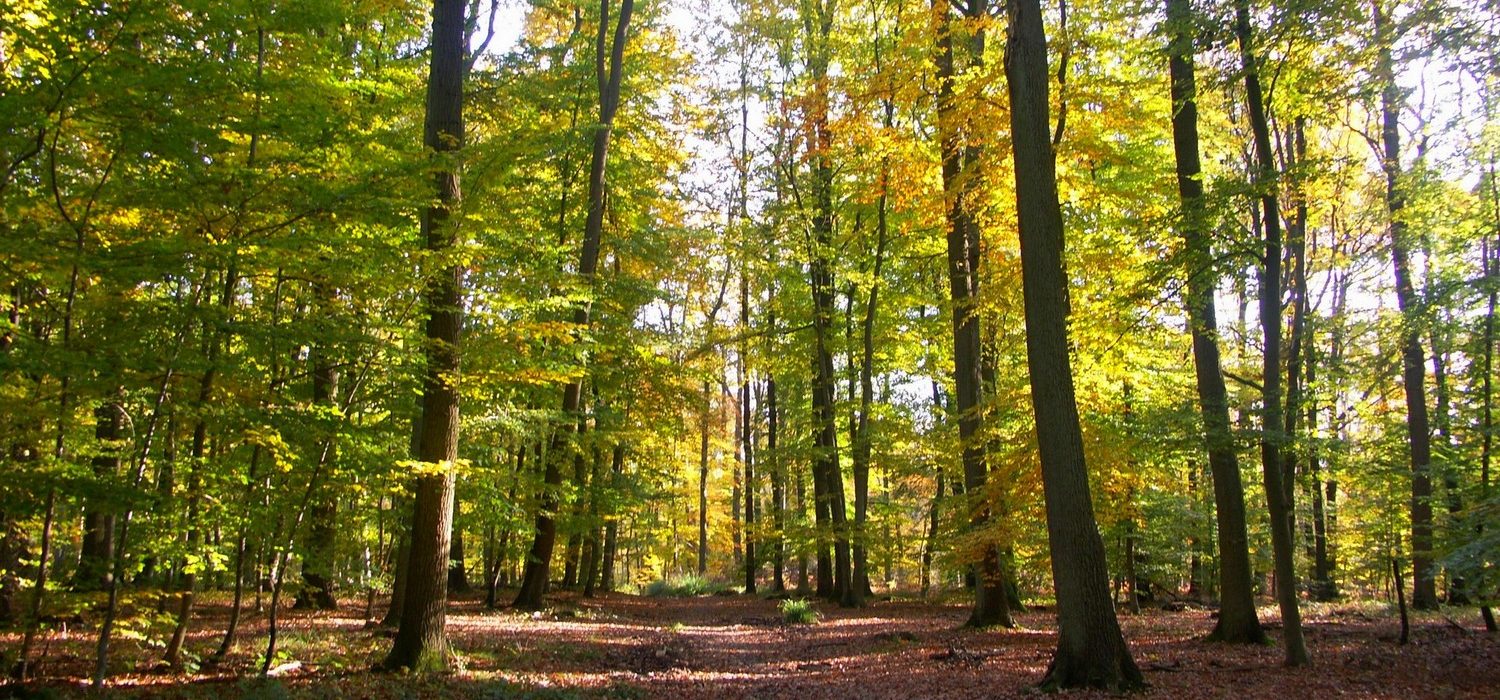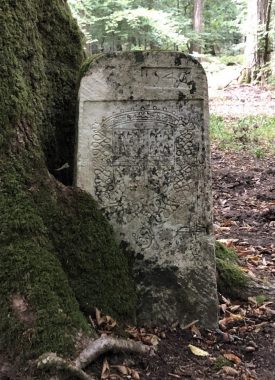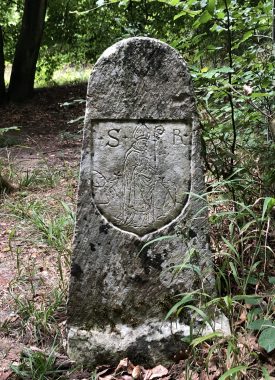Why are there armorial posts in the forest? Where do they come from? Why are they useful?
Texts, visuals and circuits proposed by Mr Jean-Marc Chalot, with the support of Society of History and Archeology of Senlisthe Senlis Rotary Club and Senlis Sud-Oise Community of Communes.
The importance of the forest
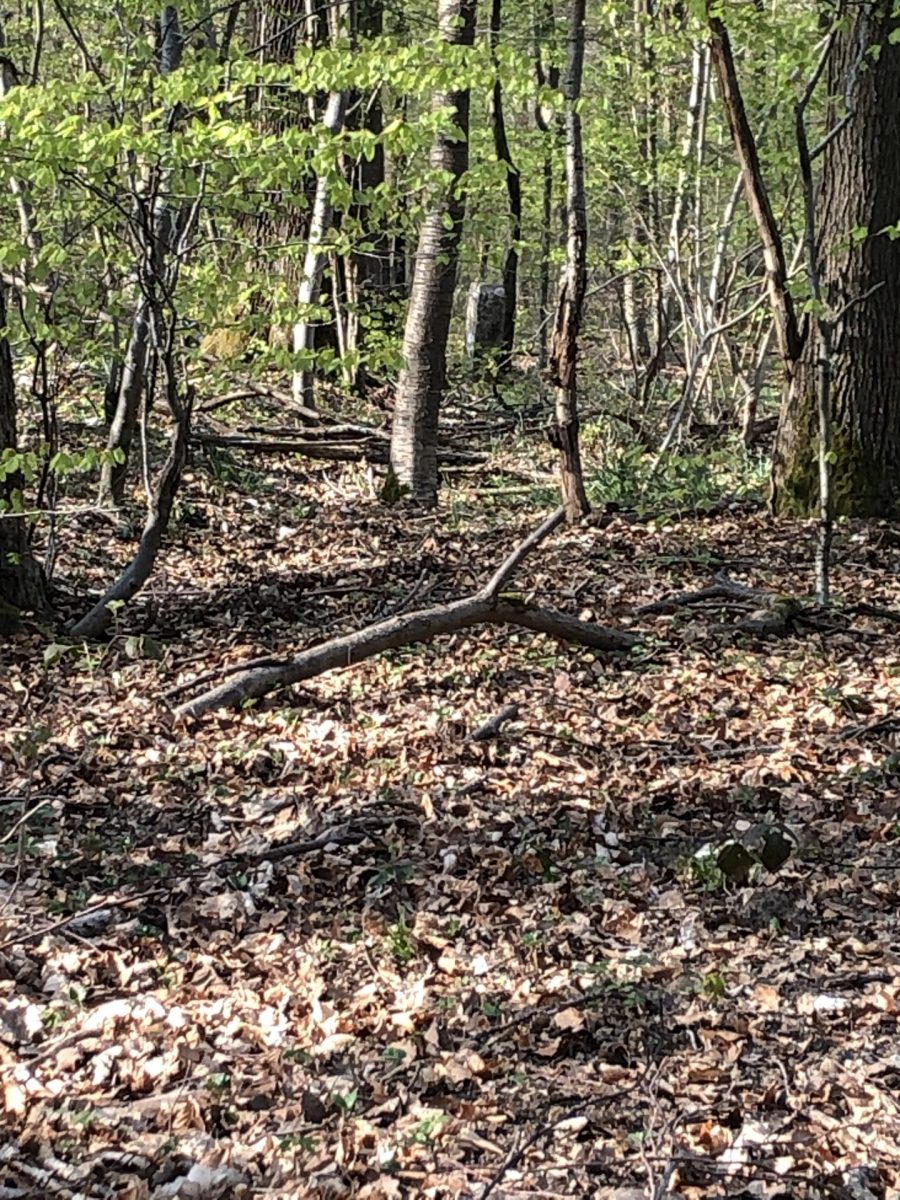
The forest plays an important role from the Middle Ages until the Industrial Revolution. This is the main fuel sourceIt's a vital source of fuel for cooking and heating, both directly from wood, gathered or cut, and from charcoal produced on site. It is an essential source of building materialwhich is irreplaceable for carpentry. And it's a power supply directly by hunting, or indirectly to feed domestic animals; acorns for pigs or small undergrowth for cows and sheep.
All these resources are linked to specific rightsSome, such as big game hunting, remained the prerogative of the king or the great lords. Owning a plot of woodland or rights over a plot was a major source of income.
As there are very few roads in the forest (those we know today were laid out in the 17th and 18th centuries for hunting purposes), plots are at best demarcated by ditches and the embankment created by the excavation of the ditch.
It will be when a sale is made or, above all, when a dispute arises between neighbours, that a precise measurement will be taken and boundary stones erected to mark the property boundaries..
The origins of armorial posts

Anne de Montmorency (1493-1567), Lord of Chantilly, Constable of France and the most important person in the kingdom after the King, wished to develop his hunting estate at Chantilly and came up against the priory of Saint-Nicolas d'Acy. To resolve the dispute, a transaction was concluded in 1537 : "Boundaries will be planted with the Baron's coat of arms and the priory mark. to delimit properties. These are the first armorial posts to be erected in the region.
From that date onwards, the Constable de Montmorency, in order to avoid further interminable trials, had all his possessions, both in the forest of Chantilly and in the forest of Halatte and even outside the forest, fenced off. From 1537 to 1546, more than 200 markers bearing the Constable's coat of arms are in place.
The dispute with the priory of Saint-Nicolas d'Acy was not finally settled until 1553, when the priory relinquished all its rights in the Chantilly forest in exchange for several properties, including the Constable's woods in the Halatte forest.
Afterwards, no more bollards will be planted in the Chantilly forestOn the contrary. The Princes de Condé, who succeeded the Montmorency family, continued to extend the Chantilly forest estate and the boundary markers are no longer required following the gradual purchase of the plots. More than half will be uprooted, destroyed, buried, or sometimes moved for purely decorative purposes.
Constable Anne de Montmorency
Corneille de Lyon after François Clouet, 16th century, oil on canvas, Musée Condé - Chantilly
Armorial Bearings in the Halatte Forest
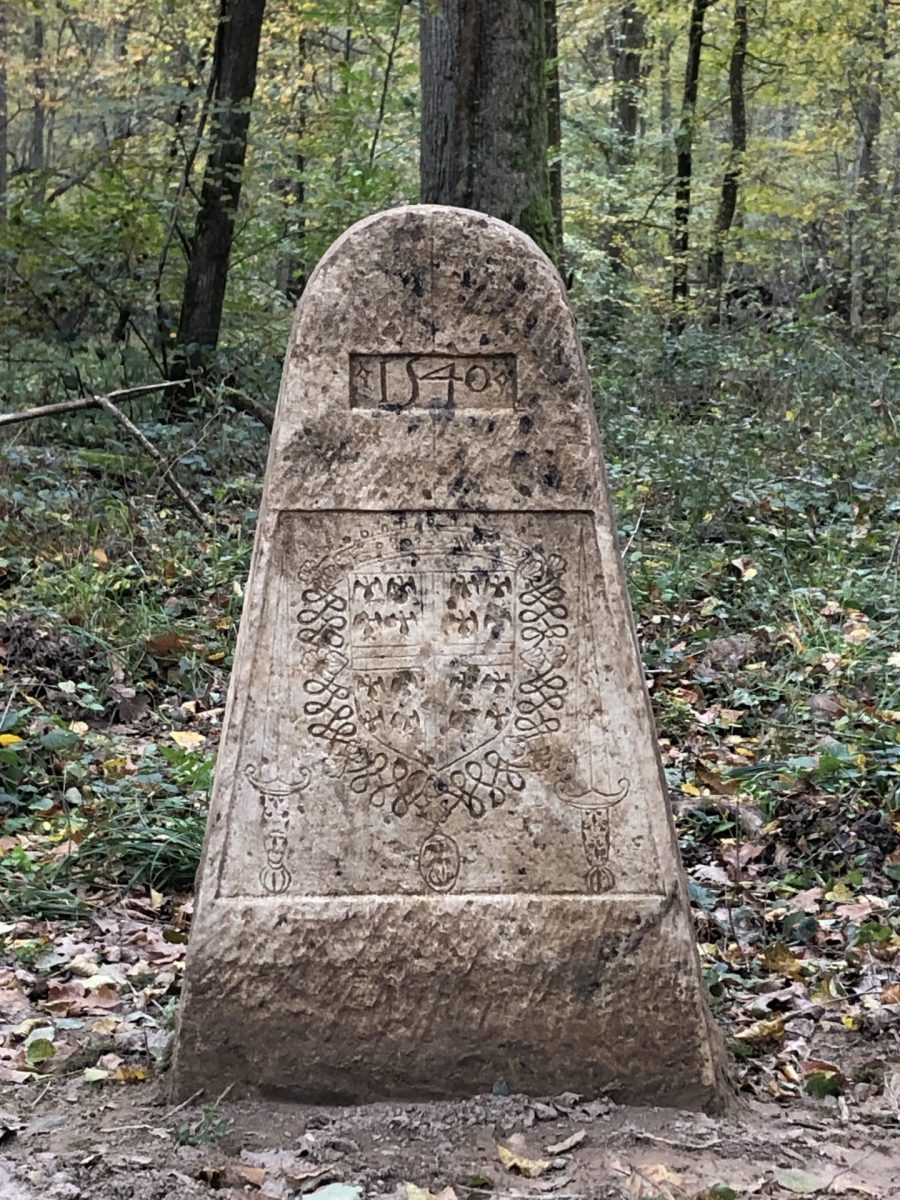
The current boundaries of the Halatte forest are more or less the same as they were in the 13th century, when clearing was prohibited in order to preserve the hunting grounds. They are a royal forestbut the kings of France were quick to donate plots of it the many religious establishments in Senlis and the surrounding area and to a few lay lords.
At Mont AltaIn 1540, the Constable de Montmorency had two woods bounded by boundaries: Bois de la Livrée (11.80 ha) and Bois de Fosses (17.70 ha). The chapter of Saint-Rieul owned a wood bordering the Bois de la Livrée, the Bois de la Borne-Morel (10.70 ha), and took advantage of the operation launched by the Constable to have it completely enclosed.
Two subsequent events in the Halatte forest caused some of these markers to disappear: the division of timber in cranes applied to the Halatte forest in 1638 and the layout of new forest roads in the 17th and 18th centuries for hunting purposes. At the time of the Revolution, all the owners were expropriated for the purpose of hunting. the creation of a state-owned forest. The bollards are no longer in use, they have been abandoned and forgotten.
These armorial posts, inventoried in 2020-2021, have been the subject ofa recovery campaign in November 2023, financed by the Senlis Rotary ClubThey are now in the same position and condition as they were in 1540.
A procedure for classification as a Historic Monument is under way.
Terminals, linked (hard limestone), about 80cm -1m highpresent the coat of arms of the owners the parcels of woodland they border. They all bear the date 1540. The top of the bollard is exceptional in France, indicates the shape of the parcel boundary.
Discover the terminals with our detailed tours
Download below pdf files of the circuits :
Bonne nouvelle !
Les bornes armoriées de la forêt d’Halatte ont été inscrites au titre des monuments historiques, garantissant leur préservation.


